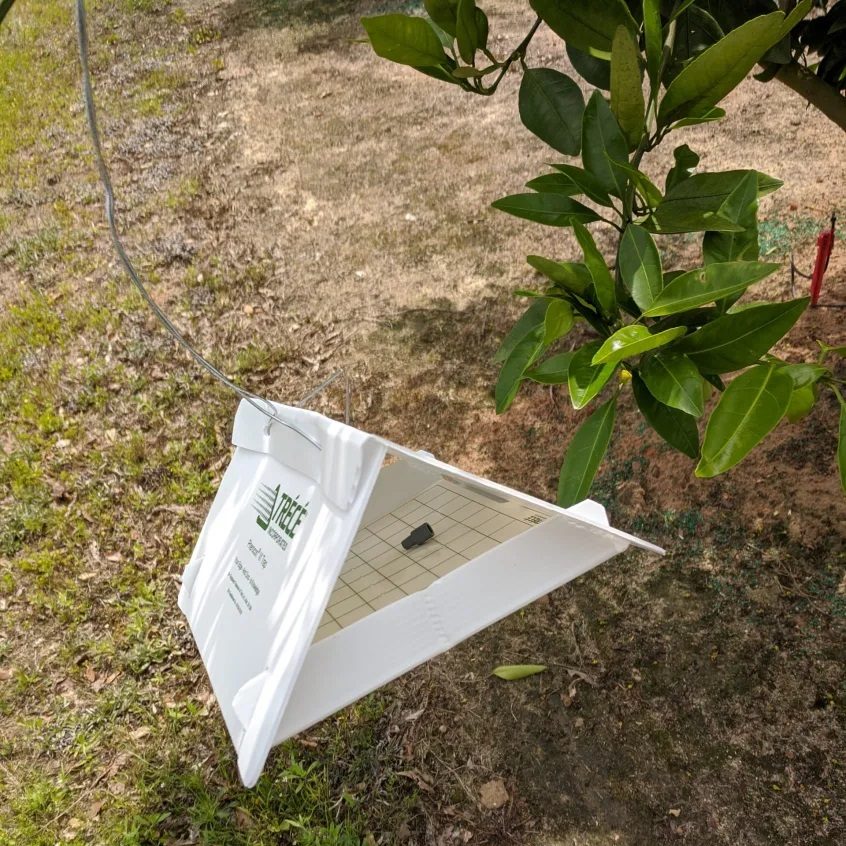By Clint Thompson
Citrus growers should emphasize leafminer management this year to preserve new flushes. This is especially important for those producers affected by the Christmas freeze event. The management strategy should include pheromone disruptions, which can help reduce pest populations.

Xavier Martini, assistant professor of entomology at the University of Florida Institute of Food and Agricultural Sciences (UF/IFAS) North Florida Research and Education Center (NFREC), spoke about leafminer management at the recent Citrus Health Forum in Quincy at the NFREC.
“The male is attracted by the pheromone of the female. What the pheromone disruption does is create a big mist of the pheromone, and the male is not able to find its mate. If there’s no mating, there’s no eggs, so less mines,” Martini said. “It works pretty well. What we hope to do next year is put a spray that you can hang on the tree and deliver a dose of pheromone every couple of hours. That would be time saving and very convenient for growers.”
Pheromone-baited traps are also essential for growers to use when adult leafminers are invading citrus groves. Growers can monitor for the pests, which usually build rapidly on the spring flush and then vary with other flushing cycles. Trees are most susceptible to leafminer damage during the flushing period. Growers need to preserve these new flushes ahead of next harvest season. Trees require the new foliage since the prolonged period of sub-freezing temperatures in December knocked the leaves off the trees in the cold-hardy citrus region.
“Know the peaks of when the adults increase,” Martini advised. “Just knowing when your adults are here is a good indication of when you need to get ready for spraying a neonicotinoid.”
Leafminer populations decline to their lowest levels during the winter months.









